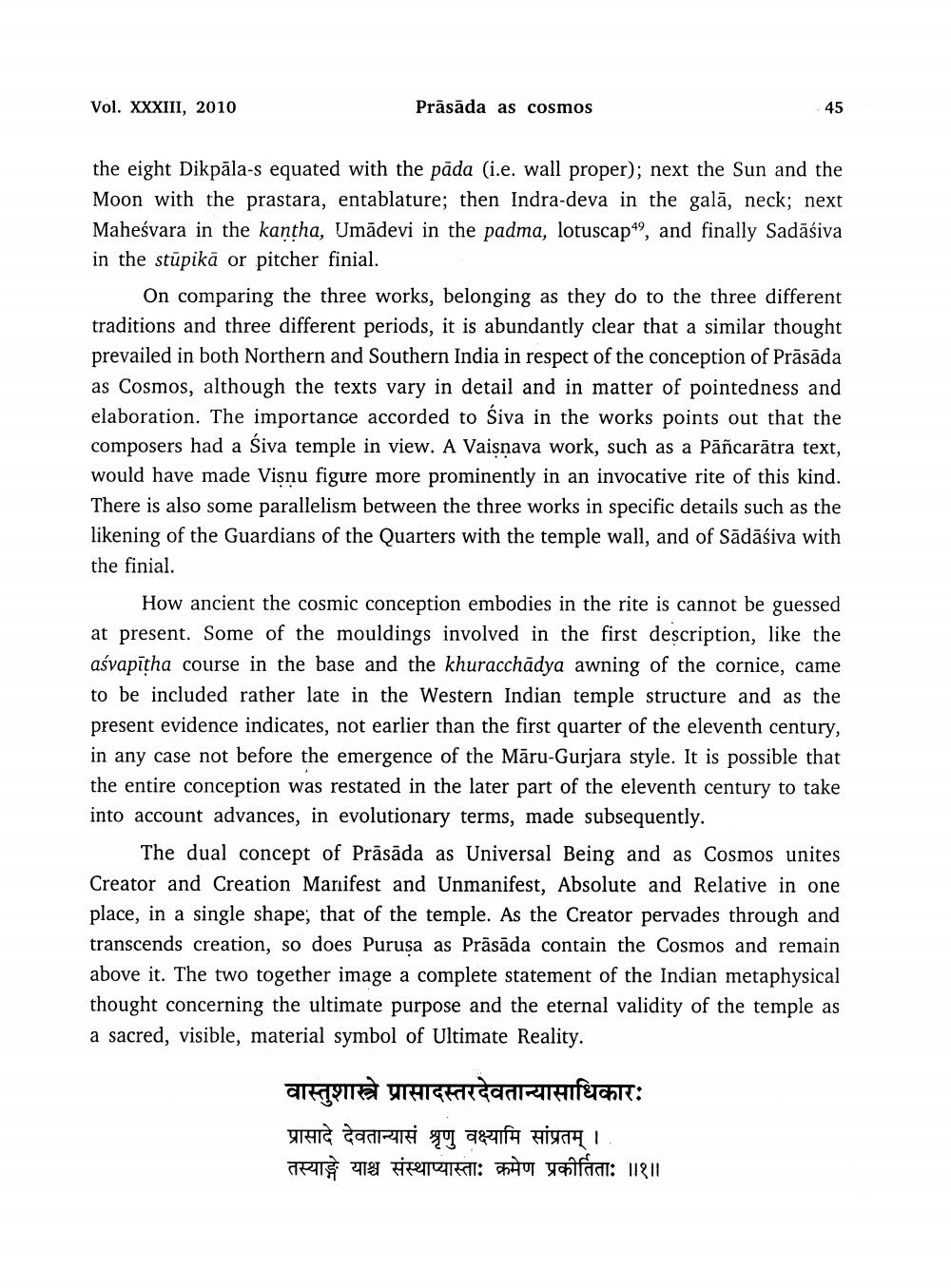________________
Vol. XXXIII, 2010
Prāsāda as cosmos
45
the eight Dikpāla-s equated with the pāda (i.e. wall proper); next the Sun and the Moon with the prastara, entablature; then Indra-deva in the galā, neck; next Maheśvara in the kantha, Umādevi in the padma, lotuscap 49, and finally Sadāsiva in the stūpikā or pitcher finial.
On comparing the three works, belonging as they do to the three different traditions and three different periods, it is abundantly clear that a similar thought prevailed in both Northern and Southern India in respect of the conception of Prāsāda as Cosmos, although the texts vary in detail and in matter of pointedness and elaboration. The importance accorded to Śiva in the works points out that the composers had a Śiva temple in view. A Vaisnava work, such as a Pāñcarātra text, would have made Visnu figure more prominently in an invocative rite of this kind. There is also some parallelism between the three works in specific details such as the likening of the Guardians of the Quarters with the temple wall, and of Sādāśiva with the finial.
How ancient the cosmic conception embodies in the rite is cannot be guessed at present. Some of the mouldings involved in the first description, like the aśvapītha course in the base and the khuracchädya awning of the cornice, came to be included rather late in the Western Indian temple structure and as the present evidence indicates, not earlier than the first quarter of the eleventh century, in any case not before the emergence of the Māru-Gurjara style. It is possible that the entire conception was restated in the later part of the eleventh century to take into account advances, in evolutionary terms, made subsequently.
The dual concept of Prāsāda as Universal Being and as Cosmos unites Creator and Creation Manifest and Unmanifest, Absolute and Relative in one place, in a single shape; that of the temple. As the Creator pervades through and transcends creation, so does Purusa as Prāsāda contain the Cosmos and remain above it. The two together image a complete statement of the Indian metaphysical thought concerning the ultimate purpose and the eternal validity of the temple as a sacred, visible, material symbol of Ultimate Reality.
वास्तुशास्त्रे प्रासादस्तरदेवतान्यासाधिकारः प्रासादे देवतान्यासं श्रृणु वक्ष्यामि सांप्रतम् । . तस्याने याश्च संस्थाप्यास्ताः क्रमेण प्रकीर्तिताः ॥१॥




